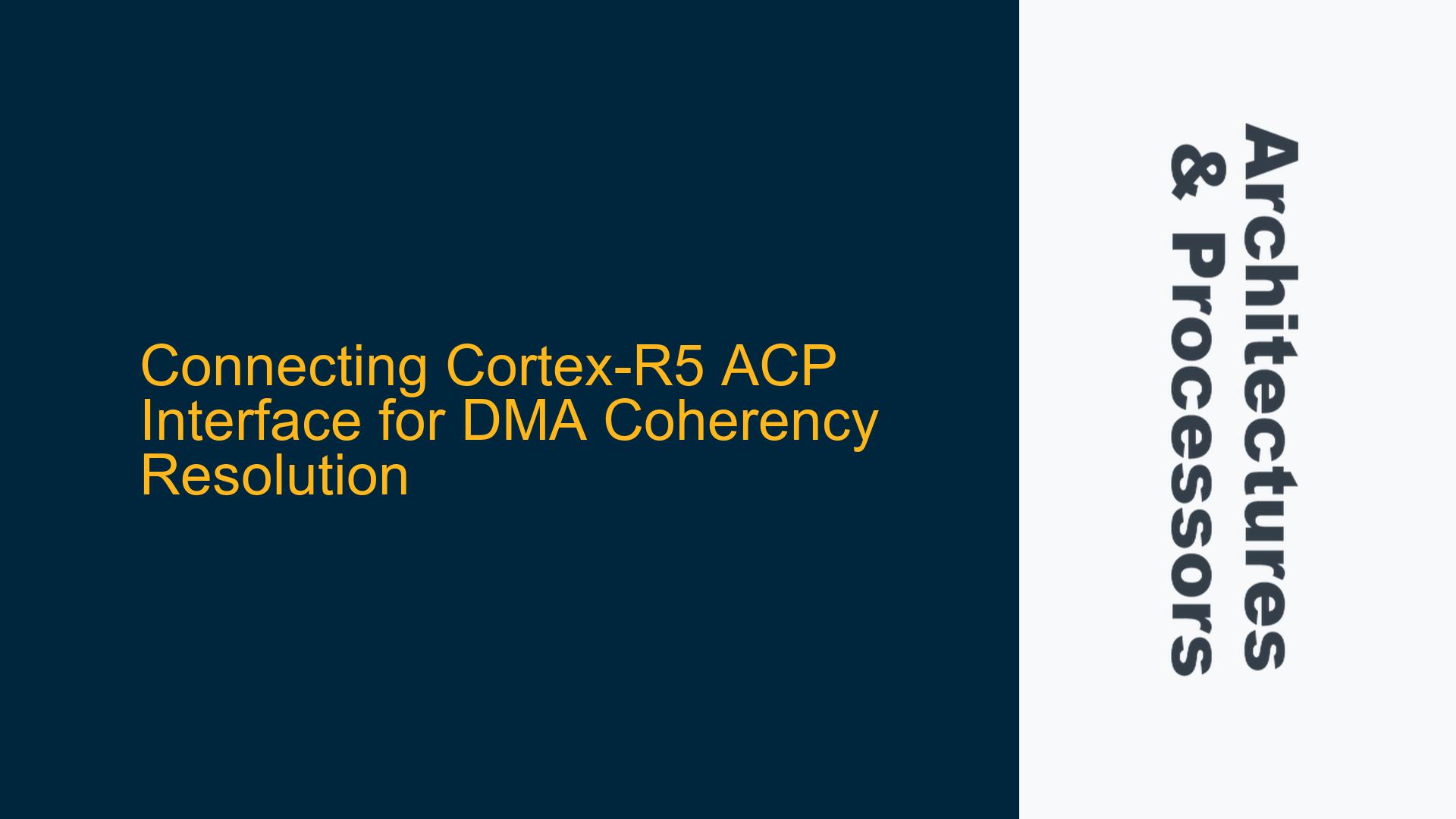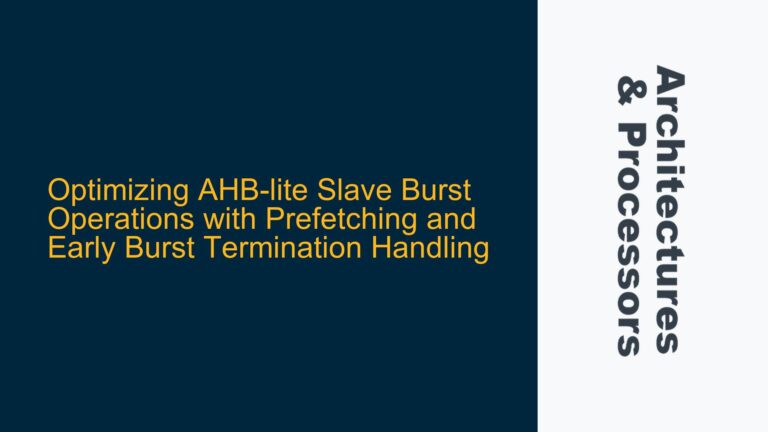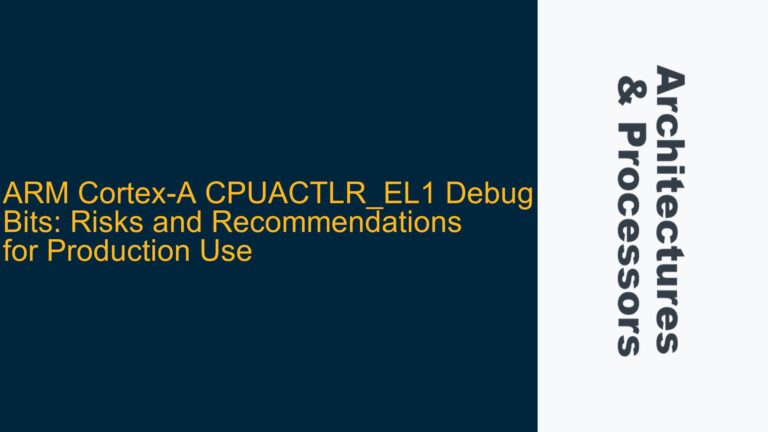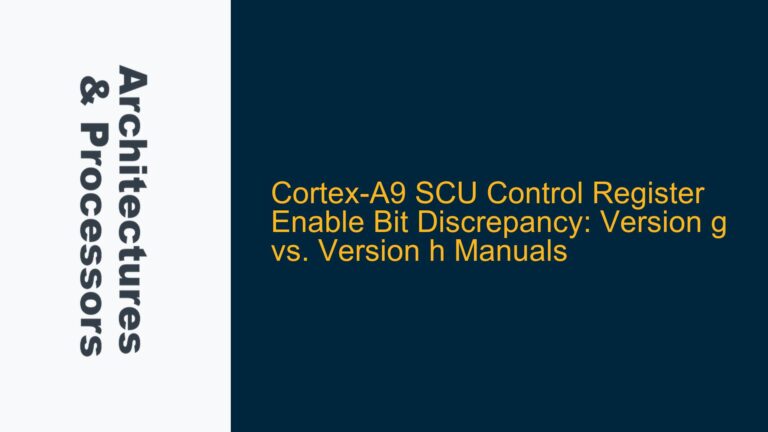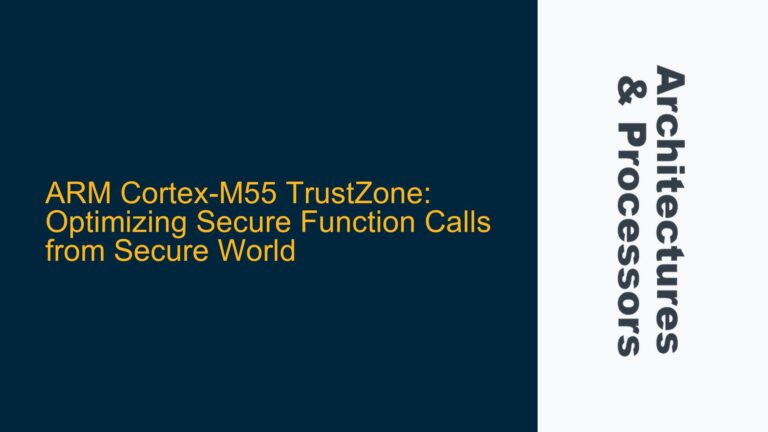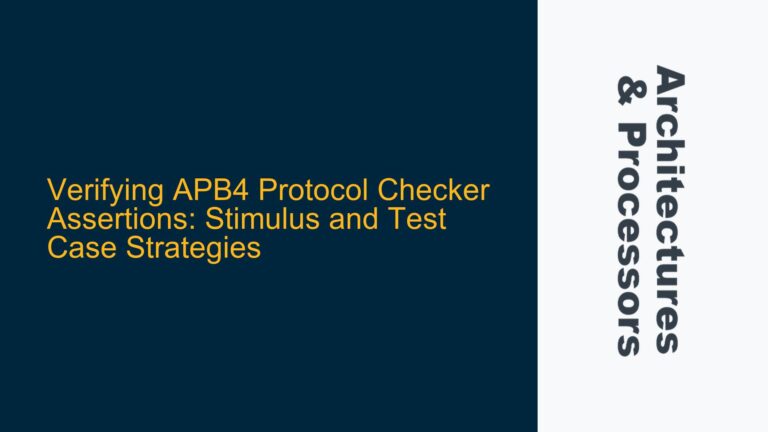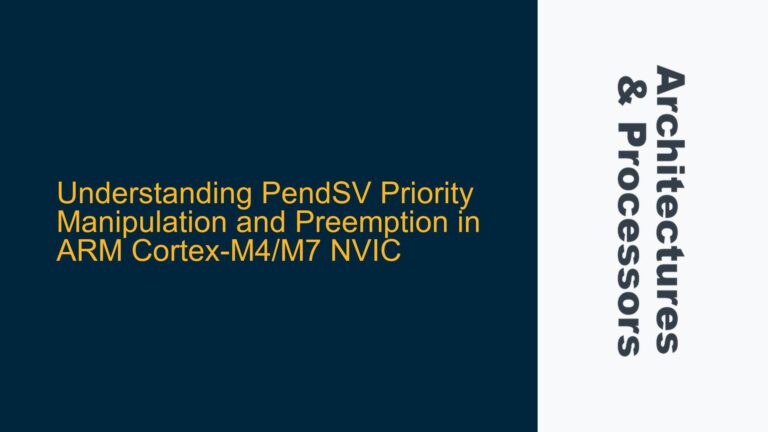Cortex-R5 ACP Interface and DMA-Induced Data Coherency Corruption
The Cortex-R5 processor features an Accelerator Coherency Port (ACP) interface, which is designed to maintain data coherency between the Level 1 (L1) and Level 2 (L2) memory systems, especially in scenarios involving Direct Memory Access (DMA) operations. The ACP interface consists of two primary components: the ACP master interface and the ACP slave interface. The ACP slave interface is intended to connect with the DMA master interface, while the ACP master interface connects with the memory system. This configuration ensures that data coherency is maintained across the system, preventing corruption that can occur when DMA operations bypass the processor’s cache hierarchy.
The core issue arises when DMA operations are performed without proper synchronization with the processor’s cache, leading to data inconsistencies between the L1 and L2 memory systems. The ACP interface is designed to address this problem by providing a coherent pathway for DMA transactions, ensuring that any data accessed or modified by the DMA is consistent with the data in the processor’s cache. However, the proper connection and configuration of the ACP interface are critical to achieving this coherency.
ACP Slave Interface Connection to DMA Master and Coherency Mechanism
The ACP slave interface is designed to connect directly to the DMA master interface. This connection allows the DMA to access the processor’s cache coherently, ensuring that any data transferred by the DMA is consistent with the data in the L1 and L2 caches. The ACP slave interface acts as a bridge between the DMA and the processor’s cache hierarchy, enabling the DMA to perform read and write operations that are coherent with the processor’s view of memory.
The ACP master interface, on the other hand, connects to the memory system. This connection allows the processor to maintain coherency between the L1 and L2 caches and the main memory. The ACP master interface ensures that any changes made by the processor to the cache are propagated to the main memory, and vice versa. This bidirectional coherency mechanism is essential for maintaining data integrity in systems where both the processor and DMA are accessing the same memory regions.
The coherency mechanism implemented by the ACP interface relies on the concept of cache snooping. When the DMA performs a read or write operation through the ACP slave interface, the ACP interface snoops the processor’s cache to ensure that the data being accessed is up-to-date. If the data in the cache is more recent than the data in memory, the ACP interface ensures that the DMA accesses the most recent data. Similarly, if the DMA modifies data, the ACP interface ensures that the processor’s cache is updated to reflect the changes.
Implementing ACP Interface Connections and Ensuring Data Coherency
To implement the ACP interface connections correctly, the ACP slave interface must be connected to the DMA master interface, and the ACP master interface must be connected to the memory system. The ACP slave interface connection ensures that the DMA can access the processor’s cache coherently, while the ACP master interface connection ensures that the processor can maintain coherency between the cache and the main memory.
The ACP slave interface connection to the DMA master interface should be configured to allow the DMA to perform coherent read and write operations. This configuration typically involves setting up the ACP slave interface to accept transactions from the DMA and to snoop the processor’s cache for coherency. The ACP master interface connection to the memory system should be configured to allow the processor to propagate cache changes to the main memory and to fetch the most recent data from memory when necessary.
To ensure data coherency, the ACP interface must be properly initialized and configured. This initialization typically involves setting up the ACP interface to enable cache snooping and to configure the coherency protocol. The coherency protocol defines how the ACP interface handles cache coherency, including how it responds to cache misses and how it updates the cache when data is modified by the DMA.
In addition to the ACP interface configuration, the system must also implement proper memory barriers and cache management techniques to ensure that data coherency is maintained. Memory barriers are used to enforce the order of memory operations, ensuring that the processor and DMA do not access stale data. Cache management techniques, such as cache invalidation and cache flushing, are used to ensure that the cache is consistent with the main memory.
The ACP interface also supports various coherency protocols, such as the MOESI (Modified, Owned, Exclusive, Shared, Invalid) protocol, which defines the states of cache lines and how they are managed. The MOESI protocol ensures that the cache lines are in the correct state to maintain coherency, and it defines how the ACP interface handles cache line transitions between states.
In summary, the ACP interface is a critical component for maintaining data coherency in systems with DMA operations. The proper connection and configuration of the ACP interface, along with the implementation of memory barriers and cache management techniques, are essential for ensuring that data coherency is maintained between the L1 and L2 memory systems. The ACP interface’s coherency mechanism, based on cache snooping and the MOESI protocol, ensures that the processor and DMA can access and modify data consistently, preventing data corruption and ensuring system reliability.
Detailed Troubleshooting Steps for ACP Interface Implementation
Step 1: Verify ACP Interface Connections
The first step in troubleshooting ACP interface issues is to verify that the ACP slave interface is correctly connected to the DMA master interface and that the ACP master interface is correctly connected to the memory system. This verification involves checking the physical connections and ensuring that the ACP interface is properly configured in the system’s hardware design.
Step 2: Configure ACP Interface for Coherency
Once the connections are verified, the next step is to configure the ACP interface for coherency. This configuration involves setting up the ACP interface to enable cache snooping and to configure the coherency protocol. The coherency protocol should be selected based on the system’s requirements and the specific coherency mechanism supported by the ACP interface.
Step 3: Implement Memory Barriers and Cache Management
After configuring the ACP interface, the system must implement proper memory barriers and cache management techniques to ensure data coherency. Memory barriers should be placed at critical points in the code to enforce the order of memory operations, and cache management techniques, such as cache invalidation and cache flushing, should be used to ensure that the cache is consistent with the main memory.
Step 4: Test and Validate Coherency
The final step is to test and validate the coherency of the system. This testing involves running a series of tests to ensure that the ACP interface is maintaining data coherency between the L1 and L2 memory systems. These tests should include scenarios where the DMA and processor are accessing the same memory regions, and the results should be verified to ensure that the data is consistent and that no corruption has occurred.
Step 5: Monitor and Optimize Performance
Once the system is validated, it is important to monitor and optimize the performance of the ACP interface. This monitoring involves analyzing the system’s performance to identify any bottlenecks or inefficiencies in the ACP interface’s operation. Optimization techniques, such as adjusting the coherency protocol or fine-tuning the cache management settings, can be used to improve the system’s performance and ensure that the ACP interface is operating efficiently.
Step 6: Document and Maintain Configuration
Finally, it is important to document the ACP interface configuration and maintain it throughout the system’s lifecycle. This documentation should include details of the ACP interface connections, configuration settings, and any optimizations that have been implemented. Maintaining this documentation ensures that the system can be easily updated or modified in the future, and it provides a reference for troubleshooting any issues that may arise.
In conclusion, the ACP interface is a powerful tool for maintaining data coherency in systems with DMA operations. By following the detailed troubleshooting steps outlined above, engineers can ensure that the ACP interface is properly connected, configured, and optimized to maintain data coherency and prevent data corruption. The ACP interface’s coherency mechanism, based on cache snooping and the MOESI protocol, provides a robust solution for maintaining data integrity in complex embedded systems.
